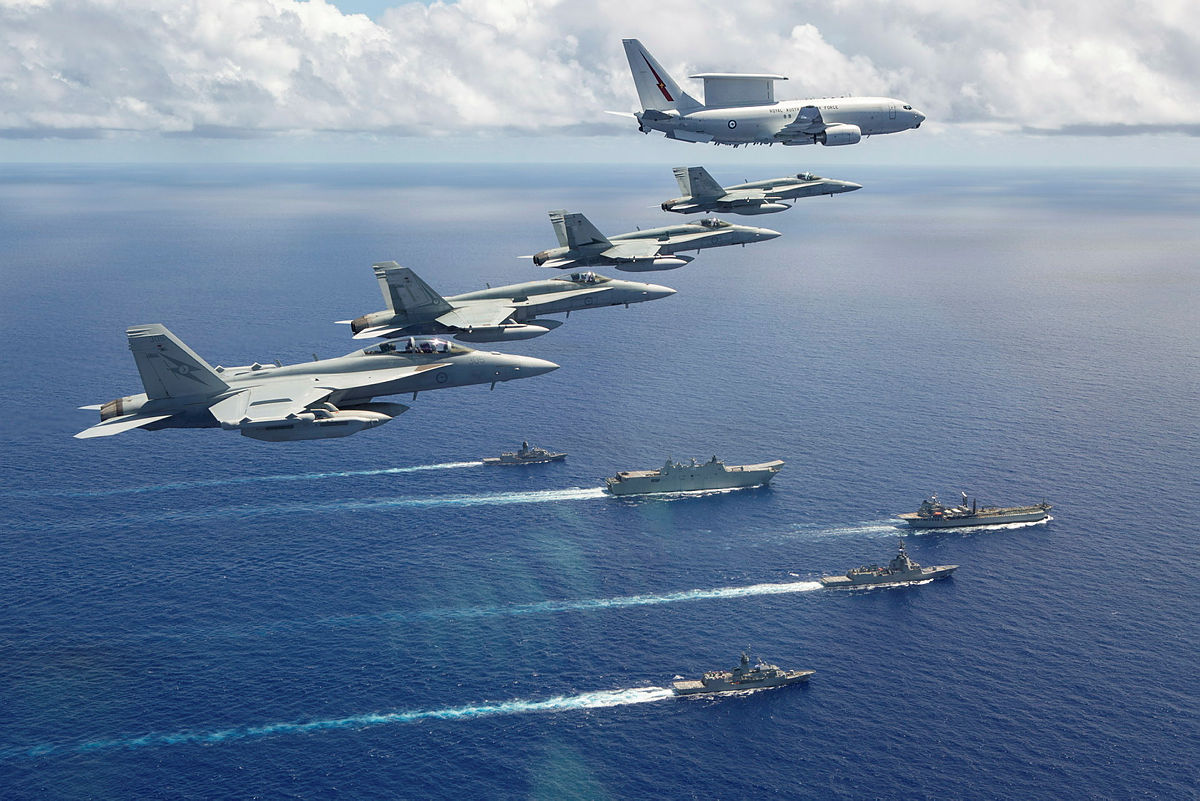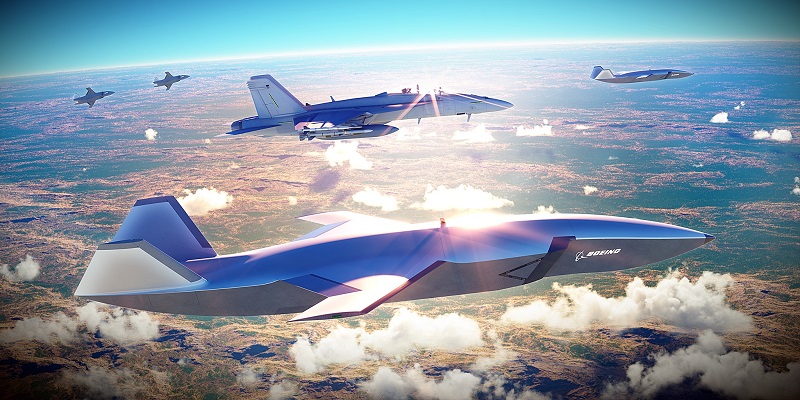More F-35s, more tankers: a reliable way to strengthen Australian deterrence

If the Chinese navy’s task group sailing around Australia a few weeks ago showed us anything, it’s that Australia has a deterrence gap so large you can drive a ship through it. Waiting for AUKUS or hoping Australia’s troubled shipbuilding program will deliver—in the 2030s—is a recipe for annual panic about grey zone coercion as Chinese deployments become routine.
Boosting our air combat capability is the fastest way to address Australia’s deterrence gap. That requires two things: more combat aircraft and more airborne tankers.
For decades, received wisdom has been that 100 fighter aircraft were enough for Australia. The logic was vague and came from the Royal Australian Air Force’s four fighter squadrons retaining different mission specialisations. Given multi-role capabilities and sensor fusion of modern aircraft, this specialisations argument is outdated.
So, can 100 aircraft provide credible deterrence?
Currently the RAAF has 72 F-35A Lightnings, 24 F/A-18F Super Hornets and 12 EA-18G Growlers (electromagnetic attackers), for a total of 108 combat-capable aircraft. The jets are supported by seven A330 MRTT tanker-transports (called KC-30As by the RAAF).
Combat readiness is a different story. The Australian Department of Defence doesn’t provide combat aircraft availability numbers, but in 2019 the then US secretary of defense, James Mattis, told the US Navy and Air Force to attain an 80 percent mission-capable rate for combat aircraft.
There are four RAAF F-35A squadrons, including one that’s a training unit in peacetime. Each is allocated 18 aircraft to provide an intended 14 ready for duty while airframes and engines are cycled through maintenance. Two of the 14 are usually held as spares during squadron operations. Therefore, in a crisis the Australian government can expect to call on 36 operational F-35As. The same considerations result in just 16 F/A-18Fs and eight EA-18G Growlers being available
That’s a total of no more than 60 aircraft for a continent the size of Europe—hardly enough.
During surge operations the 60 RAAF combat jets could all be available. But during ongoing crisis operations—such as conducting defensive combat air patrols in the east, north and west of Australia or keeping aircraft next to runways for quick intercepts—the air combat force will quickly run into sustainment problems.
Historical observations of British and US combat aircraft availability show the mission- availability rate can be even worse—for example, due to unreliable parts supply.
On an island continent, air power is the fastest and most efficient means of deterrence. But we just don’t have enough air power.
The Royal Air Force operates 171 combat aircraft and 14 tankers from a land mass 3 percent the size of Australia. The Japanese air force has about 330 fighters and a land mass 5 percent of Australia’s. No other nation seems as committed as Australia to doing so much with so little. The only comparable air force in size to the RAAF is Canada’s, which has 79 fighters.
If Australia is serious about retaining strategic independence, including the ability to credibly deter an enemy, we should increase the size of the RAAF’s fighter force by two squadrons—36 aircraft—and add four A330 MRTT tankers. This should be phased alongside introduction of unmanned semi-autonomous teamed aircraft on a ratio of three uncrewed systems, including some for refuelling, for each additional crewed combat aircraft.
Increasing the fighter force to seven operational squadrons, including the existing dedicated electronic attack squadron but not the training unit, and supplementing it with about 100 autonomous aircraft would grow the RAAF’s combat capability to 240 aircraft before 2034.
A force this size reduces the fragility of the current air combat capability by adding depth through numbers and provides the government with a much broader range of options.
The flexibility of packaged air combat aircraft means they can quickly swing between roles and locations in a matter of hours. Missions can range from air policing and regional assurance to cruise missile defence, maritime strike and counter-air missions. Combat aircraft can be permanently stationed on both the west and east coasts.
The United States is the only country that could supply 36 fighters quickly. The obvious choice is the F-35A, since Lockheed Martin is pushing out 150 fighters of that design annually. Moreover, acquiring aircraft of designs that are already in-service avoids the risks inherent in introducing new types.
Over the long-term, policy settings such backing the development of long-range autonomous and teamed systems can be put in place to make us more strategically secure. But what we need now is an air combat system that helps us understand, decide and act.
The building blocks are in place. The RAAF operates the Wedgetail airborne surveillance, P-8A Poseidon maritime patrol and MC-55A Peregrine electromagnetic surveillance aircraft. Combined with the Jindalee over-the-horizon radar network and Five Eyes intelligence-sharing arrangements, these give us a reasonable understanding of what is happening in our region and where.
But there must be greater emphasis on the action part of the system—the combat aircraft—because deterrence is about the potential for response.
This is an ambitious proposal that would require significant investment in airbase and support infrastructure, particularly in the north and west of the country. But as a realistic, actionable plan that secures Australia’s future it is within our reach. And what’s more, it can be attained in years, not decades.







 China’s aircraft industry celebrated Mao Zedong’s birthday in style, unveiling three aircraft developments that will comprise an air warfare family of systems for the 2030s and beyond. One, from Shenyang, looks like a demonstrator for a fighter-size aircraft with next-generation stealth, possibly carrier-compatible. Also new was an airborne warning and control variant of the Xi’an Y-20 airlifter, the latest in an unparalleled air-surveillance line-up.
China’s aircraft industry celebrated Mao Zedong’s birthday in style, unveiling three aircraft developments that will comprise an air warfare family of systems for the 2030s and beyond. One, from Shenyang, looks like a demonstrator for a fighter-size aircraft with next-generation stealth, possibly carrier-compatible. Also new was an airborne warning and control variant of the Xi’an Y-20 airlifter, the latest in an unparalleled air-surveillance line-up.






